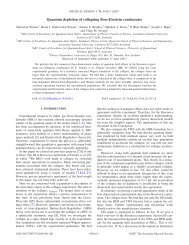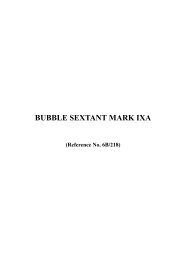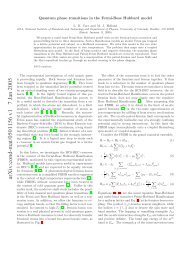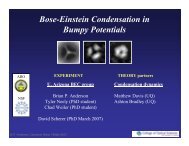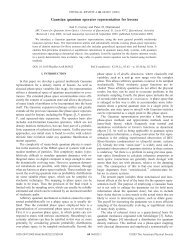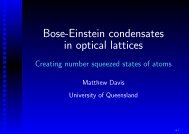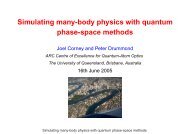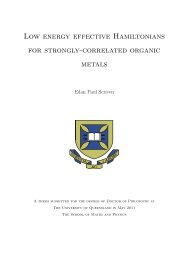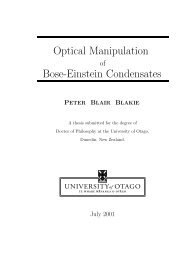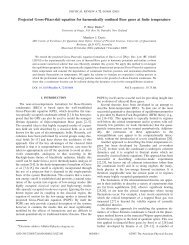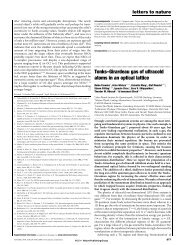Open Quantum Dynamics of Mesoscopic Bose-Einstein ... - Physics
Open Quantum Dynamics of Mesoscopic Bose-Einstein ... - Physics
Open Quantum Dynamics of Mesoscopic Bose-Einstein ... - Physics
Create successful ePaper yourself
Turn your PDF publications into a flip-book with our unique Google optimized e-Paper software.
6. <strong>Quantum</strong> effects in optical fibre communications systemsThe complete Hamiltonian and its derivation have been given in the literature[22, 24,42, 44, 45, 47, 172, 188]; we will only go over the salient points here. The starting point isa Lagrangian that generates classical Maxwell’s equations for a one-dimensional dielectricwaveguide, and that gives a Hamiltonian corresponding to the dielectric energy[43]:W =∫ [ ∫ 1t]2µ B2 + E(t ′ )Ḋ(t′ )dt ′ dV, (6.1)t 0where the electric field E gives the polarisation response <strong>of</strong> the dialectric to an incidentelectric displacement D.The field variables are then quantised by introducing equaltimecommutators between the canonical coordinates and their conjugate momenta. TheLagrangian must produce both the correct energy and Maxwell’s equations, otherwise theconjugate momenta will contain an arbitrary scaling, leading to incorrect commutationrelations[42].To the resultant Hamiltonian must be added couplings to linear gain, absorption andphonon reservoirs[23]. The phonon field consists <strong>of</strong> thermal and spontaneous excitationsin the displacement <strong>of</strong> atoms from their mean locations in the dielectric lattice.Thephonon-photon coupling induces Raman transitions and scattering from acoustic waves(the Brillouin effect) resulting in extra noise sources and an additional contribution to thenonlinearity. The initial state <strong>of</strong> phonons is thermal, with n th (ω) =[exp(ω/kT) − 1] −1 .We can introduce the photon-density operator ˆΨ(t, x) as the annihilation operator forthe linear quasi-particle excitations <strong>of</strong> the coupled electromagnetic and polarisation fieldstraveling through the fibre[45]. The non-zero equal-time commutations relations for these<strong>Bose</strong> operators are[ˆΨ(x), ˆΨ† (x )]′ = δ(x − x ′ ). (6.2)In terms <strong>of</strong> these operators, the Hamiltonian in the interaction picture and within therotating wave approximation for a single polarisation is[43, 45]Ĥ P (t) =[dx iv−∞ 2∫ ∞+2∫ ∞0(∇ ˆΨ † ˆΨ − ˆΨ† ∇ ˆΨ)+ ω ′′ ∇ ˆΨ † ∇ ˆΨ − χ e ˆΨ† ˆΨ† ˆΨ ˆΨ[ )dω ˆΨ† ˆΨr(ω)(Â(x, ω)+  † (x, ω) + ωÂ(x, ω)† (x, ω)] ] , (6.3)where v and ω ′′ are the group velocity and dispersion relation, respectively, at the carrierfrequency, which has wave number k = k c . These can be written in terms <strong>of</strong> the wave-124



